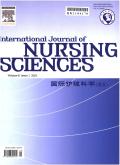神经源性膀胱的护理管理:质量证据图和临床实践指南的建议
IF 3.1
3区 医学
Q1 NURSING
引用次数: 0
摘要
目的本研究采用证据图谱法系统评价神经源性膀胱(NB)护理的临床实践指南(CPGs)。我们旨在确定研究趋势、证据差距和共识模式,为循证护理实践提供信息,并支持制定高质量的CPGs。方法系统检索PubMed、Web of Science、Embase、Guidelines International Network (GIN)等电子数据库和指南库。通过双研究员筛选和提取符合条件的NB指南,并使用研究和评估指南评估II (AGREE II)和评估建议卓越性(AGREE- rex)工具评估方法和推荐质量。五名研究人员独立评估了推荐的特异性、证据分级系统和实施的一致性。差异通过协商一致或第三方仲裁解决。结果来自11个国家/地区的19份cpg(2006-2023)分析显示,78.95%(15/19)纳入了证据分级系统,68.42%(13/19)明确了推荐强度。AGREE II评估确定了关键的方法学缺陷,三个领域的得分低于可接受的阈值:开发的严谨性(41.70%),编辑独立性(43.30%)和适用性(30.00%)。结果显示,在临床适用性(55.56%)和植入式(41.67%)方面表现一般,但在价值和偏好方面存在严重差距(25.00%)。系统综合确定了40项建议:90%(36/40)表现出共识,10%(4/40)表现出矛盾。这些研究涉及以下六个临床主题:1)护理评估,2)操作辅助排尿,3)行为治疗,4)间歇导尿,5)留置导尿,6)其他治疗。结论CPGs在NB护理中的方法和建议存在很大的差异。因此,迫切需要提高与nb相关的cpg的质量。为了提高CPGs的实用性,缩小CPGs与临床的差距,需要更深入的研究和及时的更新。本文章由计算机程序翻译,如有差异,请以英文原文为准。
Nursing management of the neurogenic bladder: Evidence map of quality and recommendations from clinical practice guidelines
Objectives
This study employed evidence mapping to systematically evaluate clinical practice guidelines (CPGs) for neurogenic bladder (NB) care. We aimed to identify research trends, evidence gaps, and consensus patterns to inform evidence-based nursing practices and support the formulation of high-quality CPGs.
Methods
A systematic search of electronic databases and guideline repositories was conducted, included PubMed, Web of Science, Embase, Guidelines International Network (GIN), ect. Eligible NB guidelines underwent dual-researcher screening and extraction, and methodological and recommendation quality were assessed using the Appraisal of Guidelines for Research and Evaluation II (AGREE II) and Evaluation-Recommendations Excellence (AGREE-REX) instruments. Five researchers independently evaluated recommendation specificity, evidence grading systems, and implementation consistency. Discrepancies were resolved through consensus discussion or third-party arbitration.
Results
Analysis of 19 CPGs (2006–2023) from 11 countries/regions revealed that 78.95 % (15/19) incorporated evidence grading systems and 68.42 % (13/19) specified recommendation strength. The AGREE II evaluation identified critical methodological deficiencies, with three domains scoring below the acceptable thresholds: Rigor of Development (41.70 %), Editorial Independence (43.30 %), and Applicability (30.00 %). The AGREE-REX results showed moderate performance in Clinical Applicability (55.56 %) and implantability (41.67 %) but severe gaps in Values and Preferences (25.00 %). A systematic synthesis identified 40 recommendations: 90 % (36/40) demonstrated consensus and 10 % (4/40) contradictions. These studies addressed the following six clinical themes: 1) nursing assessment, 2) manipulation-assisted voiding, 3) behavioral therapy, 4) intermittent catheterization, 5) indwelling catheterization, and 6) other therapies.
Conclusions
The methodologies and recommendations of the CPGs for NB in nursing demonstrated substantial variability. Therefore, there is an urgent need to improve the quality of the NB-related CPGs. More in-depth research and timely updates are required to enhance the practical utility of CPGs and narrow the gap between CPGs and clinical practice.
求助全文
通过发布文献求助,成功后即可免费获取论文全文。
去求助
来源期刊

International Journal of Nursing Sciences
Nursing-Nursing (all)
CiteScore
6.10
自引率
2.60%
发文量
408
审稿时长
25 days
期刊介绍:
This journal aims to promote excellence in nursing and health care through the dissemination of the latest, evidence-based, peer-reviewed clinical information and original research, providing an international platform for exchanging knowledge, research findings and nursing practice experience. This journal covers a wide range of nursing topics such as advanced nursing practice, bio-psychosocial issues related to health, cultural perspectives, lifestyle change as a component of health promotion, chronic disease, including end-of-life care, family care giving. IJNSS publishes four issues per year in Jan/Apr/Jul/Oct. IJNSS intended readership includes practicing nurses in all spheres and at all levels who are committed to advancing practice and professional development on the basis of new knowledge and evidence; managers and senior members of the nursing; nurse educators and nursing students etc. IJNSS seeks to enrich insight into clinical need and the implications for nursing intervention and models of service delivery. Contributions are welcomed from other health professions on issues that have a direct impact on nursing practice.
 求助内容:
求助内容: 应助结果提醒方式:
应助结果提醒方式:


